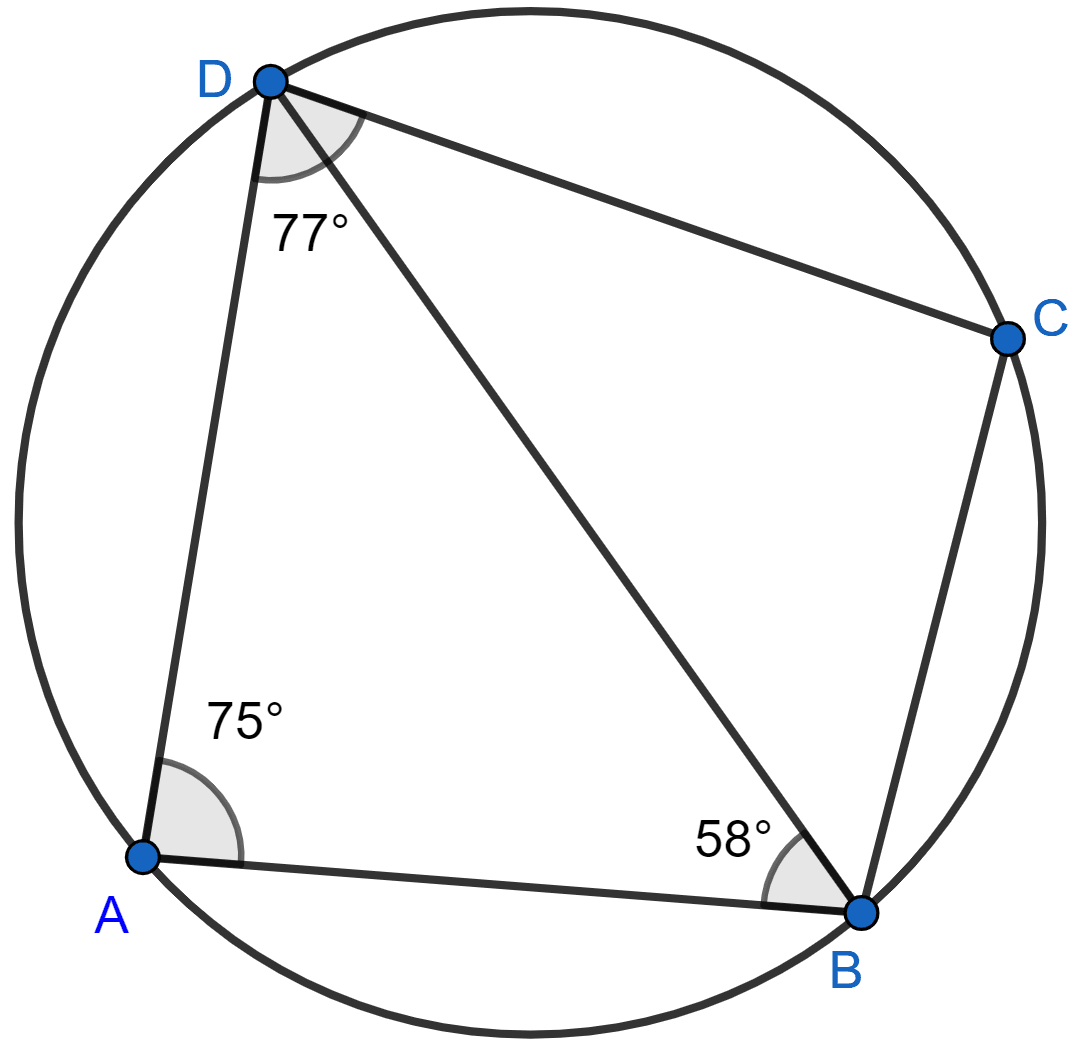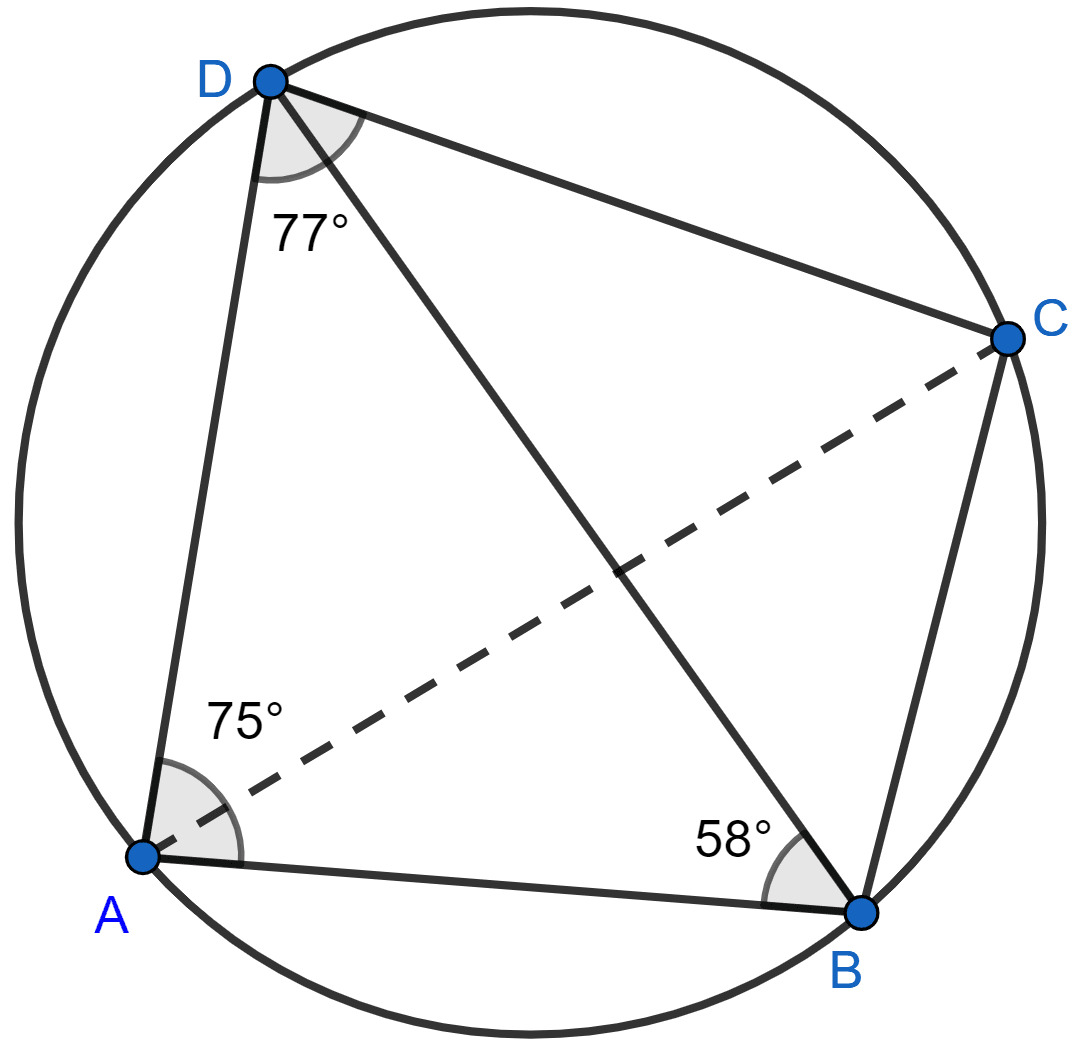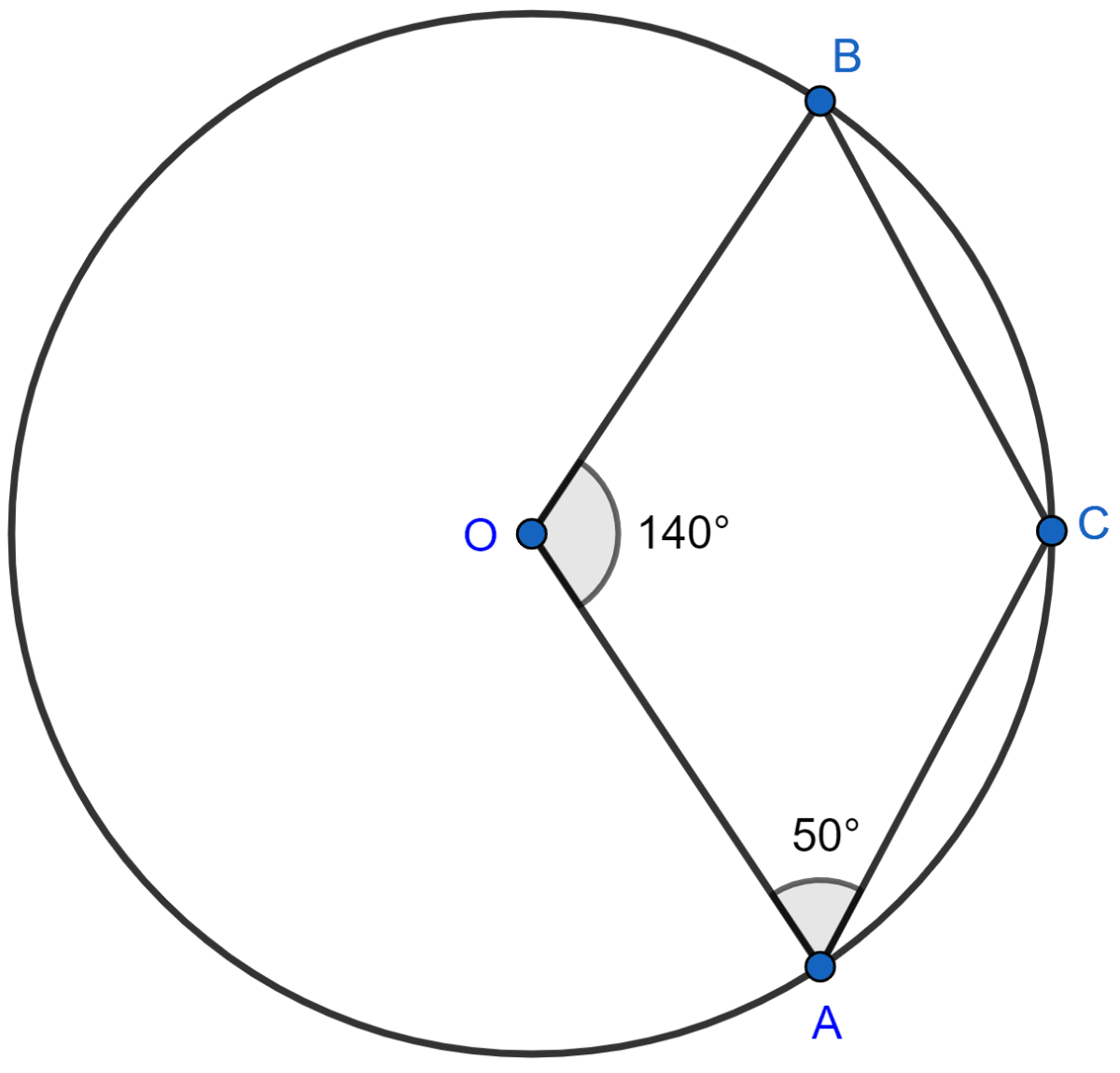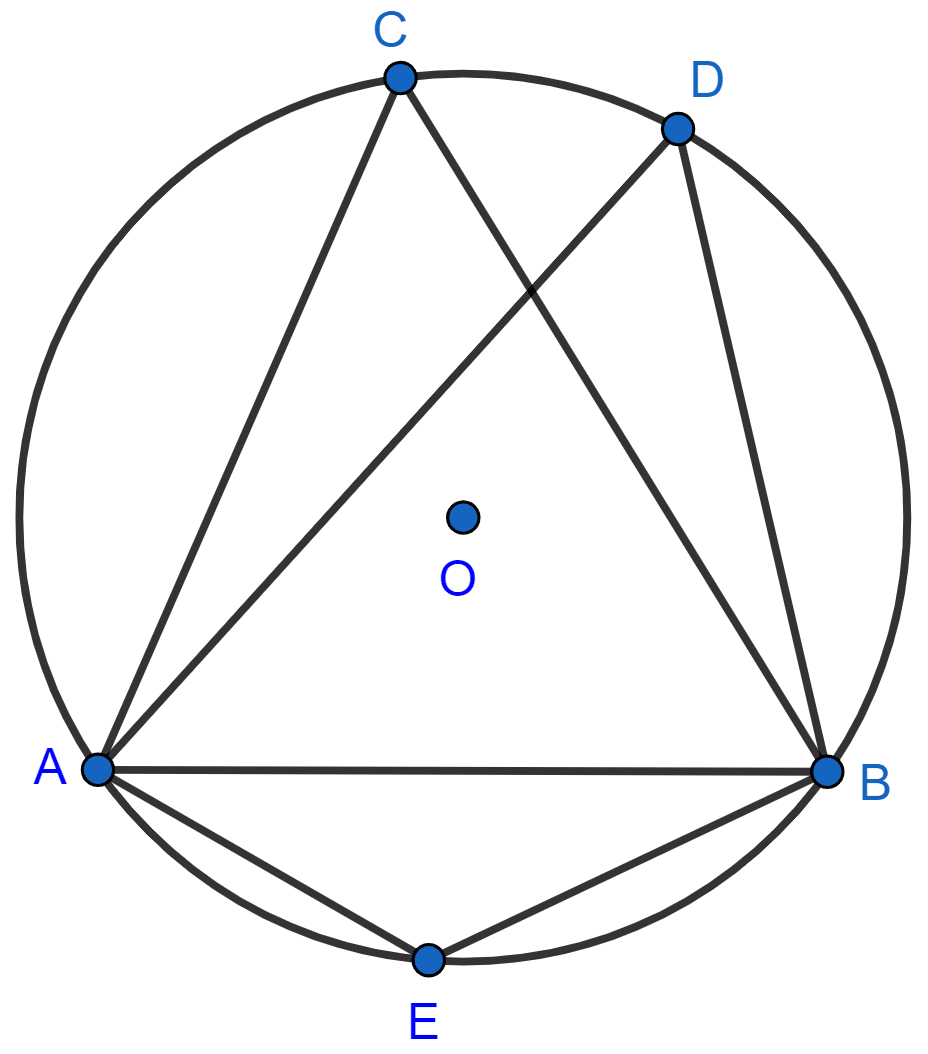Mathematics
In the figure, given below, ABCD is a cyclic quadrilateral in which ∠BAD = 75°; ∠ABD = 58° and ∠ADC = 77°. Find :
(i) ∠BDC,
(ii) ∠BCD,
(iii) ∠BCA.

Circles
19 Likes
Answer
(i) We know,
Sum of angles in a triangle = 180°.
In △ABD,
⇒ ∠ADB + ∠ABD + ∠DAB = 180°
⇒ ∠ADB + 58° + 75° = 180°
⇒ ∠ADB + 133° = 180°
⇒ ∠ADB = 180° - 133° = 47°
From figure,
∠BDC = ∠ADC - ∠ADB = 77° - 47° = 30°.
Hence, ∠BDC = 30°.
(ii) We know that,
Sum of opposite angles of a cyclic quadrilateral is 180°.
⇒ ∠BAD + ∠BCD = 180°
⇒ ∠BCD = 180° - 75° = 105°.
Hence, ∠BCD = 105°.
(iii) Join AC.

We know that,
Angles subtended by the same chord on the circle are equal.
∠BCA = ∠ADB = 47°
Hence, ∠BCA = 47°.
Answered By
9 Likes
Related Questions
In the figure, given below, ∠ABC is equal to :
105°
75°
90°
45°

In the given figure, O is the centre of the circle. If ∠AOB = 140° and ∠OAC = 50°; find :
(i) ∠ACB,
(ii) ∠OBC,
(iii) ∠OAB,
(iv) ∠CBA.

In the following figure, O is the centre of the circle and ΔABC is equilateral.
Find:
(i) ∠ADB, (ii) ∠AEB.

ABCD is a cyclic quadrilateral in a circle with centre O. If ∠ADC = 130°, find ∠BAC.
